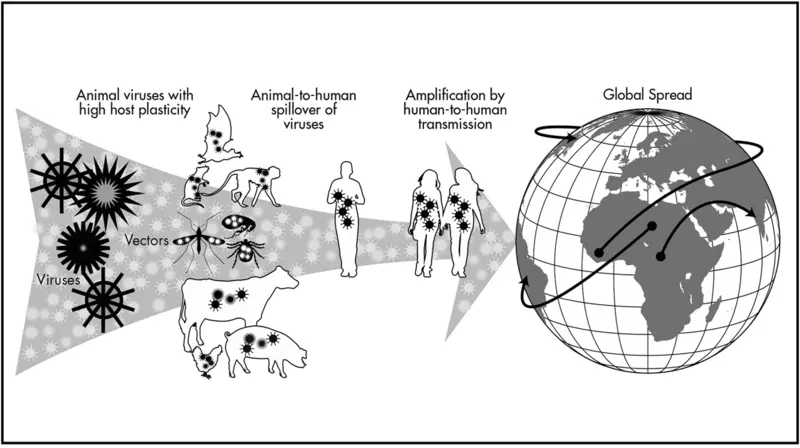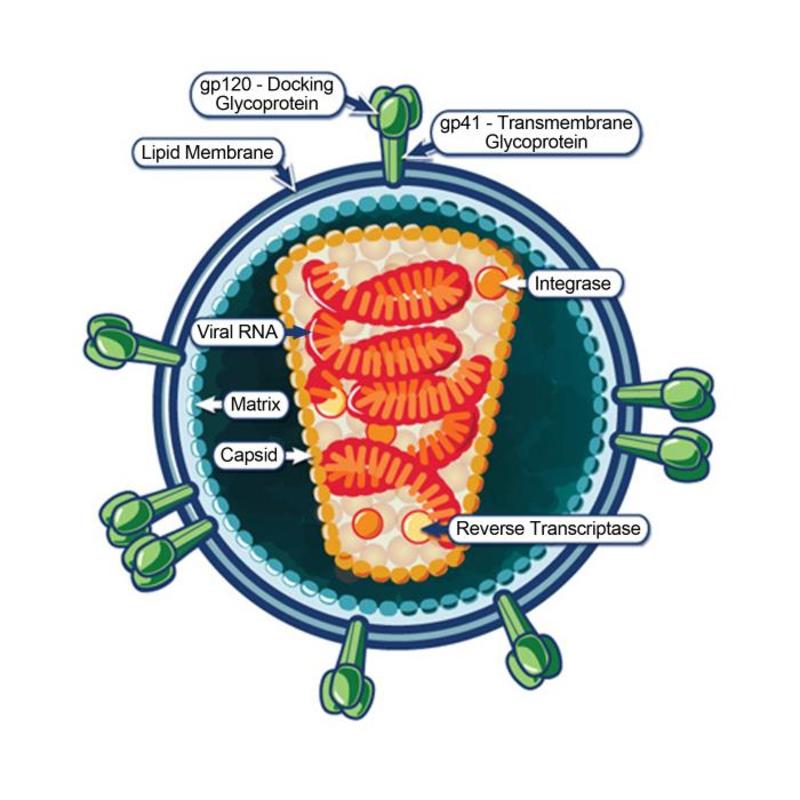Infectious Disease
Infectious disease poses a huge unmet medical need around the globe. This need will grow as ‘spillover’ events – where pathogens move from wildlife or livestock to people – become more common, increasing the frequency of pandemics. We therefore urgently need to strengthen our pandemic preparedness. To do so, Kavli INsD researchers are working to:
- Better understand viral structure and function
- Develop antivirals and other drugs
- Design biosensors to detect viruses
The viruses that Kavli INsD researchers study include:
- SARS-CoV-2 and other coronaviruses
- Dengue
- Zika
- Hepatitis B and C (HBV and HCV)
- Human Immunodeficiency Virus (HIV)
- Ebola
- Influenza
- Malaria
Figure: Pandemic properties of zoonotic viruses that spill over from animals to humans and spread by secondary transmission among humans. https://doi.org/10.1038/srep14830
Kavli researchers working in infectious disease take interdisciplinary approaches, developing new tools as well as applying them. They are working to discover the structure of viruses and the molecular mechanisms that enable them to, for example, enter host cells or replicate.
Kavli INsD infectious disease researchers use methods from medicinal chemistry, chemical biology, structural biology, biophysics and computational modelling, including:
- X-ray crystallography
- Electron cryotomography
- NMR spectroscopy
- Cryo-EM
- Mass photometry
- Mass spectrometry
They also use fluorescence microscopy methods, including:
- Fluorescence anisotropy
- Single-molecule FRET
- Total-internal reflection fluorescence (TIRF)
One key research area within this theme is viral protein glycosylation – where carbohydrate molecules (glycans) are attached to proteins. Glycosylation can dramatically alter a protein’s structure and function. Viruses use glycosylation to evade detection by the immune system, among other functions. However, glycosylated proteins have a highly complex structure, so they have been difficult to study.
Kavli INsD researchers are investigating how viruses glycosylate and fold their surface glycoproteins. They are also seeking to identify the roles of specific glycan structures – in host-pathogen interactions, for example. The aim is to exploit this information to develop antivirals and other drugs. In addition to the methods above, they develop and apply techniques in glycoprotein engineering, glycomics and glycoproteomics.
Illustration: Produced by the National Institute of Allergy and Infectious Diseases (NIAID), this illustration depicts the ultrastructural morphology of the human immunodeficiency virus (HIV), responsible for causing acquired immune deficiency syndrome, or more commonly referred to as AIDS. Features include the internal viral capsid, which contains the viral ribonucleic acid (RNA), and components of the virus’ external lipid membrane. Credit: National Institute of Allergy and Infectious Diseases (NIAID)
Overall, our work in this area focuses on:
Developing tools to study cell membranes on enveloped viruses (Lindsay Baker)
Investigating the mechanisms of viral replication in influenza (Achillefs Kapanidis)
Developing biosensors to detect viral pathogens (Achillefs Kapanidis)
Deciphering the structure of viral glycoproteins (Weston Struwe)
Discovering the role of oligosaccharides (glycans) in host-pathogen interactions (Weston Struwe)
Developing glycoprotein-based drugs via precision antibody-drug conjugation (Weston Struwe)
Investigating the molecular mechanisms by which viruses glycosylate and fold their surface glycoproteins (Nicole Zitzmann)
Building more potent glycan-targeting therapeutic proteins, including neutralising antibodies and lectins (Nicole Zitzmann)
Designing small molecule drugs that cause viral glycoproteins to misfold (Nicole Zitzmann)
Ongoing research on Malaria (Simon Draper, Matthew Higgins)
https://www.youtube.com/embed/6uPxN23OYkw





